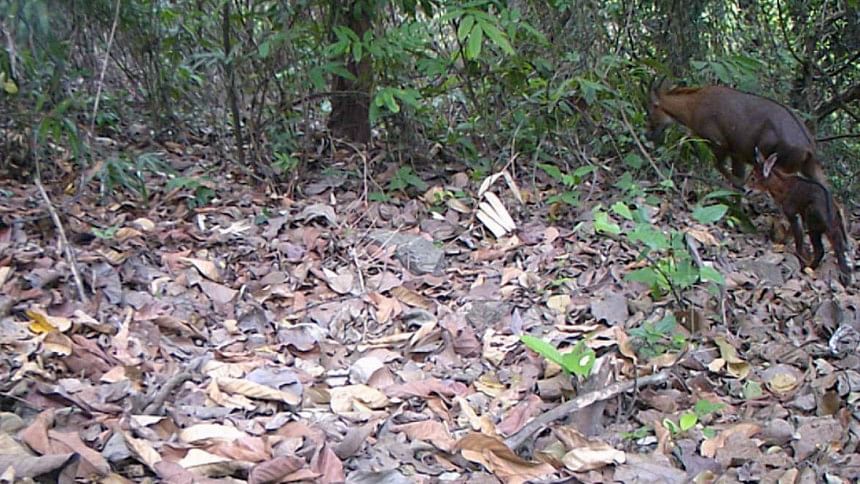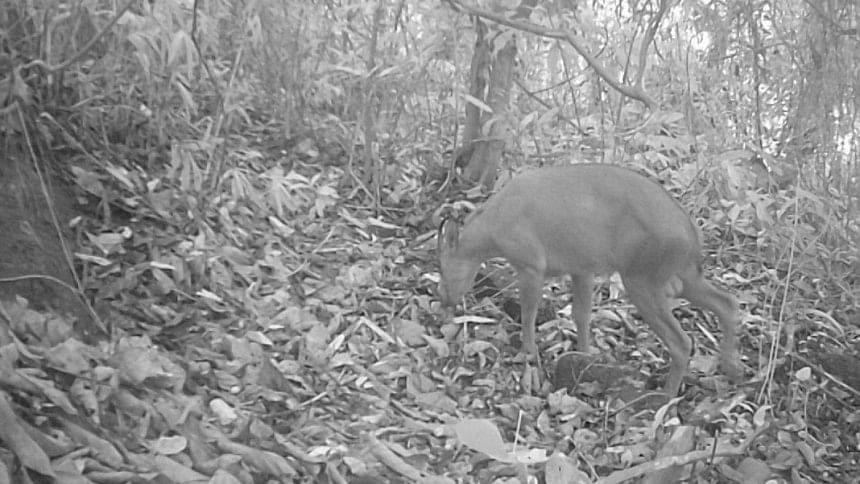Rare Burmese Red Serow seen in Baraiyadhala National Park

A recent study has identified 25 photo events of the Burmese Red Serow, a rare species of goat-antelope locally known as "bon chhagol", at Baraiyadhala National Park in Chattogram's Mirsharai upazila.
An article published in the journal Mammalia on May 14 this year revealed this information.
Conducted by researchers from the Department of Zoology of Jahangirnagar University, the study employed camera traps -- equipped with motion sensors -- to monitor wildlife. The findings reveal significant insights into the presence and behaviour of the red serow in Bangladesh.

According to nature experts, habitat loss and poaching threaten this species globally. The IUCN Red List confirms their presence in China, India, and Myanmar, with uncertain occurrences in Bangladesh.
Titled "Occurrence and temporal activity pattern of Burmese Red Serow (Capricornis rubidus, Bovidae) in Baraiyadhala National Park, Bangladesh: insights from a camera trapping study", the research was supported by the Bangladesh Forest Department through the SUFAL innovation grant (SIG-Phase 1) of The World Bank.
The study utilised 48 camera traps between January 2022 and March 2023 to gather data on their occurrence, activity patterns, and interactions with other species in the park.
Kamrul Hasan, the study's lead author, reported 25 photo events, identifying 4 female and 11 male serows.
"Baraiyadhala National Park is the country's stronghold for the wild serow in the country. However, forest fires, unregulated tourism, and hunting pose significant threats to this population. Immediate conservation measures are necessary," he said.
Ashis Kumar Datta, lecturer of zoology department and co-author of this study emphasised the need to consider the entire Baraiyadhala and adjacent Hazarikhil-Sitakunda tract as a critical landscape for wildlife conservation, particularly for the threatened serow population.
"Local communities must be educated on the importance of habitat protection and restoration," he said.
The study also highlighted the detrimental impact of tourists and poachers on the park's wildlife.
It recommends similar research in adjacent protected areas like Hazarikhil Wildlife Sanctuary, along with habitat protection and restoration programs and awareness campaigns targeting forest-dependent communities.

 For all latest news, follow The Daily Star's Google News channel.
For all latest news, follow The Daily Star's Google News channel. 



Comments